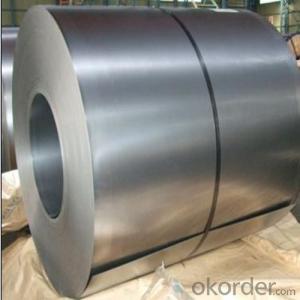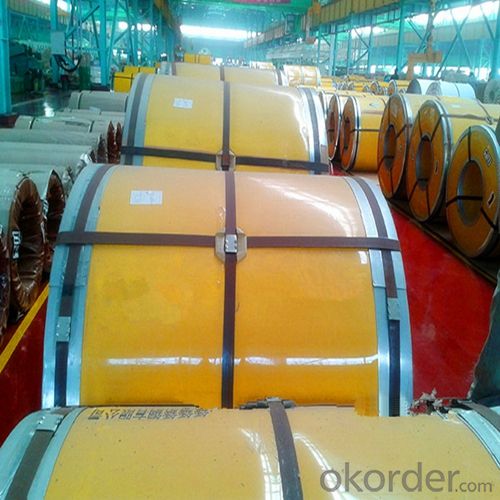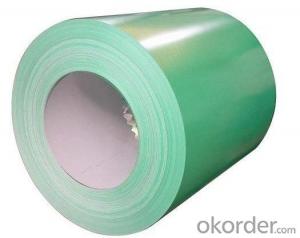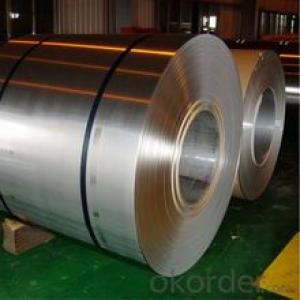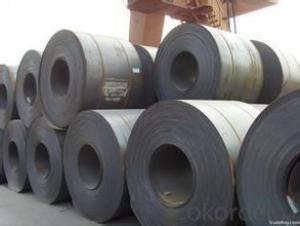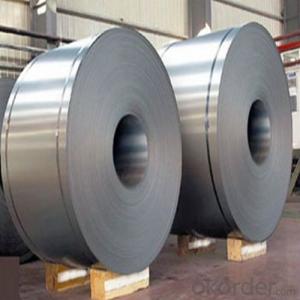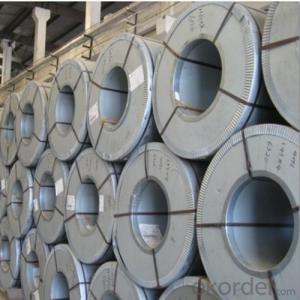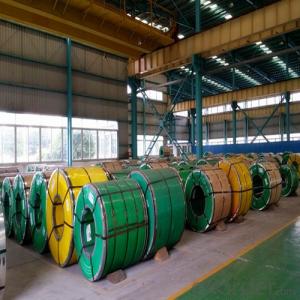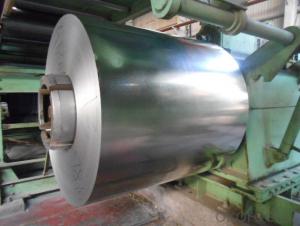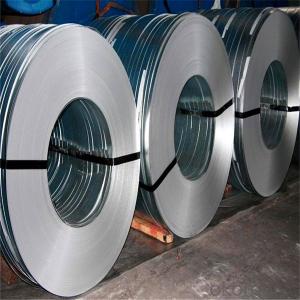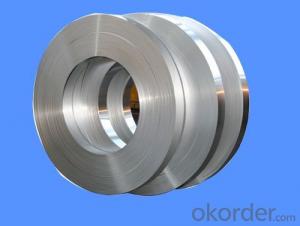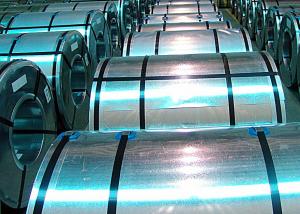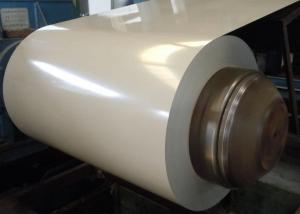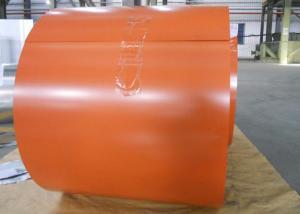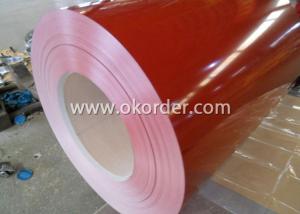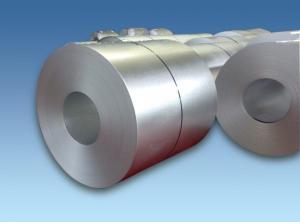Stainless Steel Coil 430 2B/BA Hot Rolled 0.2mm to 1.5mm
- Loading Port:
- Fuzhou
- Payment Terms:
- TT OR LC
- Min Order Qty:
- 100 m.t.
- Supply Capability:
- 5000 m.t./month
OKorder Service Pledge
OKorder Financial Service
You Might Also Like
1.Structure of Hot Rolled Stainless Steel Coil:
Stainless steel coil is a production which not easy rust, acid resistance and corrosion resistance, Stainless steel coil is a new kind of Austenite stainless steel by used Mn, N replace Ni. so it is widely used in light industry, heavy industry, daily necessities and the decoration industry. Stainless steel coil has good corrosion resistance and hot / cold processing performance, instead of stainless steel products for used in the not high of corrosive environment, such as indoor, inland city outdoor etc.
2.Main Features of the Hot Rolled Stainless steel coil:
1) High Quality: Using Latest automated control equipment to ensure the quality
2) Best Price: With most automated equipments to ensure our price is lower than the market
3) Fast Delivery: The delivery date within 20 das after get your order
4) Best Service: Our after-sell service team will help you to slove all the problems about the order
3. 304 Stainless steel coil Images
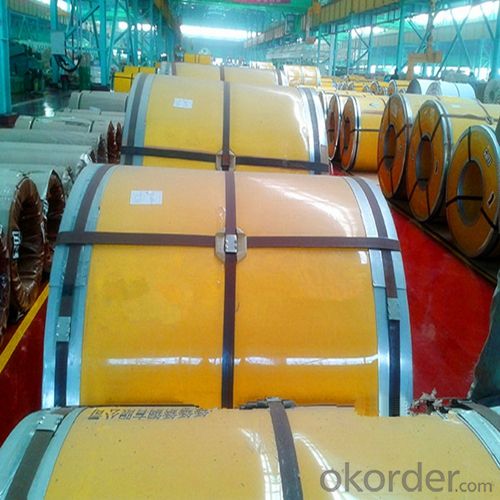
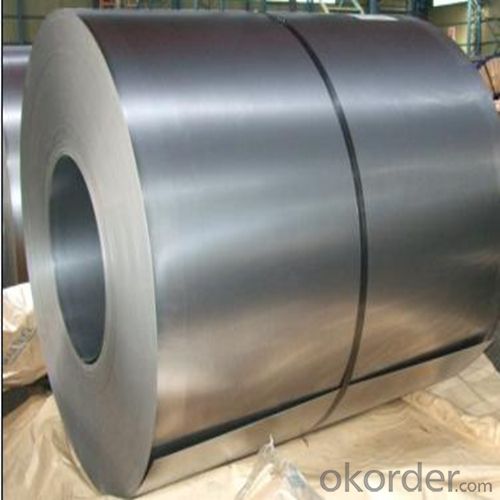
4. 304 Hot Rolled Stainless steel coil Specification
Product name: 304 Stainless Steel Coil
Thickness: 0.2mm to 1.5mm
Technical: Cold Rolled
Width: 10mm to 1240mm
Type: 200 Series
Length: As customer's requested
Standard: JIS, SUS
Finish: BA, 2B, 8K, NO.3, NO.4, HL
MOQ: 100 MT
Ship Term: FOB Shenzhen port or CNF import port
Delivery Time: 15 to 20 day after the receive the deposit or LC
Packaging: By wooden pallet, wooden case or according to customer's request
5.FAQ
We have organized several common questions for our clients,may help you sincerely:
1) How long can we receive the product after purchase?
In the purchase of product within three working days, We will arrange the factory delivery as soon as possible. The pecific time of receiving is related to the state and position of customers.Commonly 7 to 10 working days can be served.
- Q: What is the maximum temperature that steel coils can withstand?
- The maximum temperature that steel coils can withstand depends on the specific grade and type of steel being used. However, in general, steel coils can withstand temperatures up to around 1,300 to 1,500 degrees Celsius (2,372 to 2,732 degrees Fahrenheit) before they start to lose their structural integrity and develop deformation or other forms of damage.
- Q: What is the maximum width of galvanized steel strip, please? The galvanized coat is 275, and how long is one coil?
- As far as I know, the galvanized rolls of WISCO are wider in width than other domestic steel mills, and can produce 2080 wide steel coils.
- Q: where can i find information online about steel residential homes that use solar energy?
- Guide okorder /
- Q: How are steel coils labeled for identification?
- Steel coils are typically labeled for identification using tags or stickers that contain important information such as the grade, size, weight, and production details of the coil. Additionally, some coils may also have unique identification numbers or barcodes for easier tracking and inventory management.
- Q: I'm getting microdermals, from a very experienced piercer, but they don't have titanium and I know titanium is the best for this, but is Grade A Srugical Steel okay too?(P.S. also instead of getting flat heads, of the microdermals, I'm getting flat crystal like ones, are those okay? I know to be careful, I am veryyyy careful with my body, so much that I'm worried I'm going to overly do it when I get them and dry out the skin or something hahaa xp)THANK YOU ALL IN ADVANCE FOR THE HELP
- surgical steel is fine. if you really want titanium ask your piercer if you can buy them yourself and if he can use them. the diamond kind will be okay especially if you are the careful type :)
- Q: What are the different methods of surface treatment for steel coils?
- Steel coils can undergo various surface treatment methods, each with its own advantages and uses. Some commonly employed techniques include: 1. Hot-dip galvanizing: Immersing the steel coil in molten zinc results in a protective coating. This process offers excellent corrosion resistance and is commonly employed in outdoor applications like roofing, fencing, and automotive parts. 2. Electro-galvanizing: A thin layer of zinc is electroplated onto the steel coil's surface. Electro-galvanizing provides similar corrosion resistance to hot-dip galvanizing but with a thinner coating. It is often utilized when a smooth and visually appealing finish is desired, such as in appliances, electrical equipment, and automotive components. 3. Powder coating: A dry powder is applied to the steel coil's surface and cured under heat to form a durable and protective layer. This method offers excellent resistance to chipping, scratching, and fading, making it suitable for both indoor and outdoor applications. 4. Painting: Liquid paint coatings can be applied to steel coils, offering both protection and aesthetic appeal. These coatings can be customized to meet specific requirements such as corrosion resistance, UV protection, or chemical resistance. They find common usage in industries like construction, automotive, and appliances. 5. Pickling and oiling: This method involves removing scale or rust from the steel coil's surface by dipping it in an acid solution (pickling), followed by a coating of oil to prevent reoxidation. Pickling and oiling are typically employed for temporary corrosion protection during the storage and transportation of steel coils. 6. Pre-painted coatings: Steel coils can be coated with pre-painted finishes during the manufacturing stage. This continuous process involves passing the steel coil through a coating line where a layer of paint is applied. Pre-painted coatings offer a wide range of colors and finishes, making them popular in industries like construction, automotive, and appliances. These are only a few examples of the surface treatment methods commonly used for steel coils. The selection of a specific technique depends on factors such as desired corrosion resistance, aesthetic preferences, environmental conditions, and specific application requirements.
- Q: How are steel coils used in the production of aerospace structures?
- Steel coils are used in the production of aerospace structures in various ways. One of the main applications is in the manufacturing of aircraft frames and components. Steel coils are often used as the raw material to fabricate the structural members of an aircraft, such as fuselage sections, wing spars, and landing gear. The coils are typically processed through a series of operations, including cutting, bending, and welding, to shape them into the required structural components. Steel coils are preferred in aerospace applications due to their high strength and durability. They can withstand the extreme forces and stresses experienced during flight and landing. The use of steel coils ensures that the aerospace structures have the necessary structural integrity to endure the harsh operating conditions. Additionally, steel coils are also used in the production of aerospace fasteners and connectors. These fasteners play a crucial role in holding various components and structures together. Steel coil materials are often used to manufacture bolts, screws, and rivets, which are essential for assembling different parts of an aircraft. The strength and reliability of steel coils make them suitable for fastening applications, ensuring that the aerospace structures remain securely connected. Furthermore, steel coils are utilized in the production of aerospace equipment and machinery. Many aerospace manufacturing processes rely on heavy machinery and specialized equipment. Steel coils are commonly used in the construction of these machines due to their ability to provide robust and sturdy frameworks. They are often employed in the fabrication of tooling, jigs, fixtures, and molds, which are essential for producing aerospace structures with precision and accuracy. In summary, steel coils play a vital role in the production of aerospace structures. They are used as raw materials for manufacturing aircraft frames and components, fasteners and connectors, as well as aerospace equipment and machinery. The strength, durability, and reliability of steel coils make them indispensable in the aerospace industry, ensuring the safety and integrity of aerospace structures.
- Q: I know that steel wool is coated with... something... that protects it from rusting. I need to know what that is, and how to get it off.
- spun steel fibers have a microscopic coating of oil to prevent them from rusting. Rusting steel wool wouldn't sell very well. I would think that removing this oil could be accomplished with any good degreaser, like brake cleaner or the like. However, I've never tried this before. In science class they perform experiments by removing the oil with vinegar. After wringing out the steel wool pad, it is wrapped around a thermometer and placed in a sealed jar. After a few minutes the temperature rises because of the chemical reaction that takes place when four atoms of iron react with three atoms of oxygen and create two atoms of iron oxide - RUST! You can unwittingly recreate this experiment by using steel wool in the process of removing one or more layers of finish from a piece of furniture Hope this helps
- Q: What are the common applications of galvalume steel coils?
- Due to their unique properties and durability, galvalume steel coils are widely used in various applications. These coils are highly versatile and can be utilized in different industries. Some common uses of galvalume steel coils include: 1. Roofing: Galvalume steel coils are commonly employed in the construction industry for roofing purposes. The protective coating on these coils offers exceptional resistance against corrosion, making them an ideal choice for safeguarding roofs from harsh weather conditions and extending their lifespan. 2. Siding: Galvalume steel coils are also extensively used for siding applications in residential, commercial, and industrial buildings. The durability of these coils enables them to withstand external elements such as rain, wind, and sunlight without corroding or deteriorating. 3. Gutters and Downspouts: Galvalume steel coils are widely utilized in gutter and downspout systems. The corrosion-resistant properties of these coils ensure that gutters and downspouts remain functional and visually appealing for an extended period, eliminating the need for frequent replacements or repairs. 4. Appliances: Many household appliances, including refrigerators, ovens, and washing machines, incorporate galvalume steel coils. These coils' corrosion resistance and high heat reflectivity make them an excellent choice for manufacturing durable and energy-efficient appliances. 5. Automotive Industry: The automotive industry utilizes galvalume steel coils in the production of various parts such as body panels, chassis, and exhaust systems. The lightweight nature and corrosion resistance of these coils contribute to fuel efficiency and the overall durability of vehicles. 6. HVAC Systems: Heating, ventilation, and air conditioning (HVAC) systems often employ galvalume steel coils for components like ductwork and air handling units. The coils' ability to withstand high temperatures and resist corrosion ensures the longevity and efficiency of HVAC systems. 7. Agricultural Equipment: Galvalume steel coils are utilized in the manufacturing of agricultural equipment, including grain storage bins, barns, and sheds. These coils provide excellent protection against rust, ensuring that the equipment remains durable and reliable in agricultural environments. In conclusion, galvalume steel coils have a wide range of applications in various industries due to their corrosion resistance, durability, and ability to withstand harsh environmental conditions. These coils are highly sought after for their exceptional properties and are an essential component in many different sectors.
- Q: So...I'm learning about how steel is made and I'm wondering if there is a more environmentally friendy method. I view it as unfriendly b/c of the oxygen that is injected when the steel is in the blast furnace or electric arc furnace. This oxygen bonds w/ the carbon to produce CO and CO2. THis is necessary to reduce the amount of carbon content to produce harder steels. So what other methods are there that can be used w/o having to end up w/ co and co2? thanks
- From what I understand of it, US steel is better as the steel is more recycled than Canadian, so a lot of that oxygen / CO2 has already taken place compared to working from ore. The second reason US steel is environmentally ahead of Canadian is that US tends to use Electric Arc, while Canadian uses Basic Oxygen, Basic Oxygen uses more energy than electric arc, and I think it also uses more oxygen, but I would suspect that oxygen that it uses is 'waste oxygen' and not converted into Co2 because the Co2 process is limited by the carbon, and steel only has so much carbon.
Send your message to us
Stainless Steel Coil 430 2B/BA Hot Rolled 0.2mm to 1.5mm
- Loading Port:
- Fuzhou
- Payment Terms:
- TT OR LC
- Min Order Qty:
- 100 m.t.
- Supply Capability:
- 5000 m.t./month
OKorder Service Pledge
OKorder Financial Service
Similar products
Hot products
Hot Searches
Related keywords
